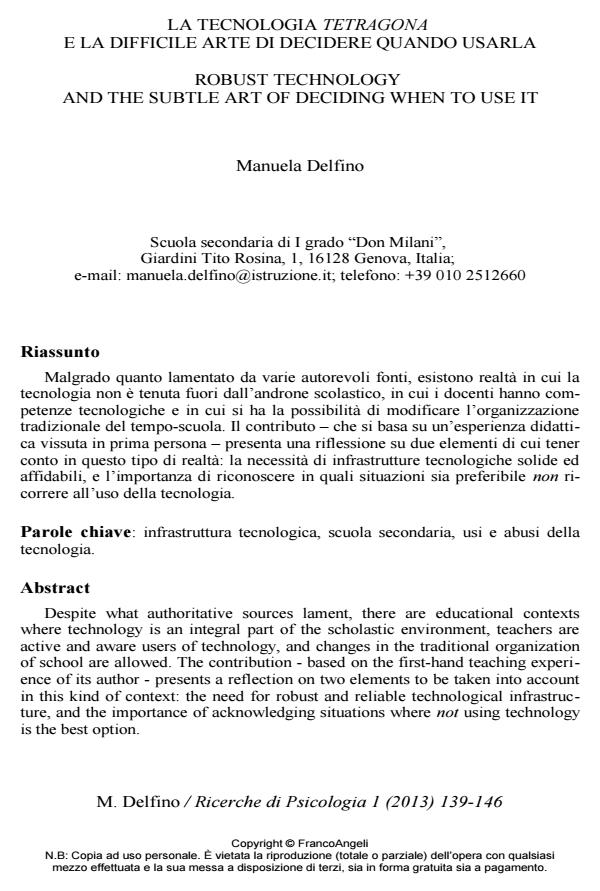La tecnologia tetragona e la difficile arte di decidere quando usarla
Titolo Rivista RICERCHE DI PSICOLOGIA
Autori/Curatori Manuela Delfino
Anno di pubblicazione 2013 Fascicolo 2013/1
Lingua Italiano Numero pagine 8 P. 139-146 Dimensione file 193 KB
DOI 10.3280/RIP2013-01009
Il DOI è il codice a barre della proprietà intellettuale: per saperne di più
clicca qui
Qui sotto puoi vedere in anteprima la prima pagina di questo articolo.
Se questo articolo ti interessa, lo puoi acquistare (e scaricare in formato pdf) seguendo le facili indicazioni per acquistare il download credit. Acquista Download Credits per scaricare questo Articolo in formato PDF

FrancoAngeli è membro della Publishers International Linking Association, Inc (PILA)associazione indipendente e non profit per facilitare (attraverso i servizi tecnologici implementati da CrossRef.org) l’accesso degli studiosi ai contenuti digitali nelle pubblicazioni professionali e scientifiche
Malgrado quanto lamentato da varie autorevoli fonti, esistono realtà in cui la tecnologia non è tenuta fuori dall’androne scolastico, in cui i docenti hanno competenze tecnologiche e in cui si ha la possibilità di modificare l’organizzazione tradizionale del tempo-scuola. Il contributo - che si basa su un’esperienza didattica vissuta in prima persona - presenta una riflessione su due elementi di cui tener conto in questo tipo di realtà: la necessità di infrastrutture tecnologiche solide ed affidabili, e l’importanza di riconoscere in quali situazioni sia preferibile non ricorrere all’uso della tecnologia.
Parole chiave:Infrastruttura tecnologica, scuola secondaria, usi e abusi della tecnologia.
Manuela Delfino, La tecnologia tetragona e la difficile arte di decidere quando usarla in "RICERCHE DI PSICOLOGIA " 1/2013, pp 139-146, DOI: 10.3280/RIP2013-01009